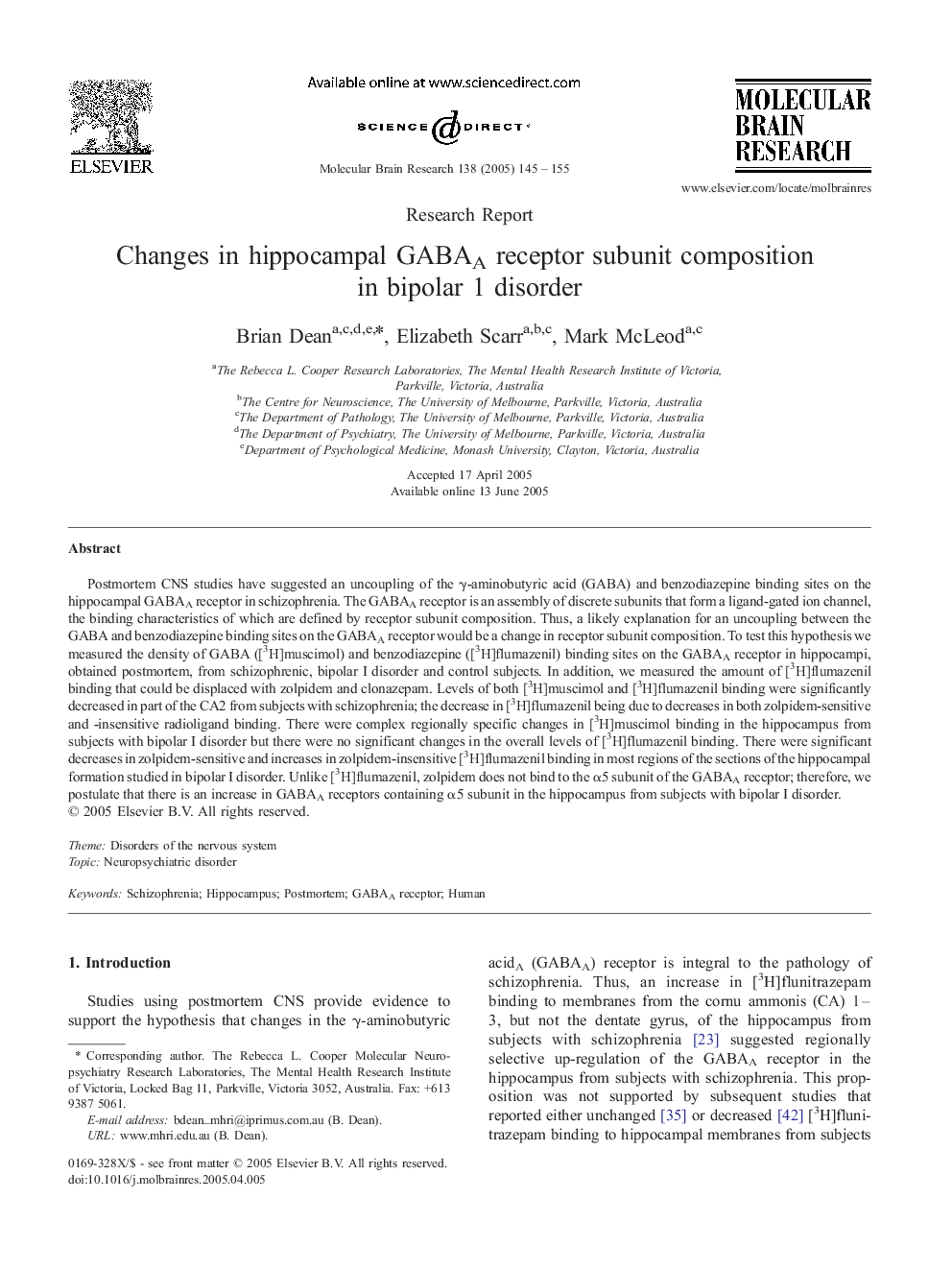| Article ID | Journal | Published Year | Pages | File Type |
|---|---|---|---|---|
| 9410820 | Molecular Brain Research | 2005 | 11 Pages |
Abstract
Postmortem CNS studies have suggested an uncoupling of the γ-aminobutyric acid (GABA) and benzodiazepine binding sites on the hippocampal GABAA receptor in schizophrenia. The GABAA receptor is an assembly of discrete subunits that form a ligand-gated ion channel, the binding characteristics of which are defined by receptor subunit composition. Thus, a likely explanation for an uncoupling between the GABA and benzodiazepine binding sites on the GABAA receptor would be a change in receptor subunit composition. To test this hypothesis we measured the density of GABA ([3H]muscimol) and benzodiazepine ([3H]flumazenil) binding sites on the GABAA receptor in hippocampi, obtained postmortem, from schizophrenic, bipolar I disorder and control subjects. In addition, we measured the amount of [3H]flumazenil binding that could be displaced with zolpidem and clonazepam. Levels of both [3H]muscimol and [3H]flumazenil binding were significantly decreased in part of the CA2 from subjects with schizophrenia; the decrease in [3H]flumazenil being due to decreases in both zolpidem-sensitive and -insensitive radioligand binding. There were complex regionally specific changes in [3H]muscimol binding in the hippocampus from subjects with bipolar I disorder but there were no significant changes in the overall levels of [3H]flumazenil binding. There were significant decreases in zolpidem-sensitive and increases in zolpidem-insensitive [3H]flumazenil binding in most regions of the sections of the hippocampal formation studied in bipolar I disorder. Unlike [3H]flumazenil, zolpidem does not bind to the α5 subunit of the GABAA receptor; therefore, we postulate that there is an increase in GABAA receptors containing α5 subunit in the hippocampus from subjects with bipolar I disorder.
Keywords
Related Topics
Life Sciences
Neuroscience
Cellular and Molecular Neuroscience
Authors
Brian Dean, Elizabeth Scarr, Mark McLeod,
